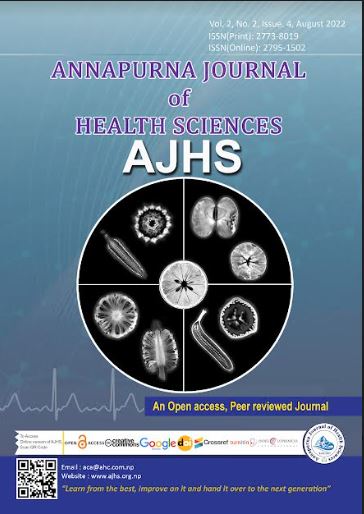Diagnostic Validity of Kramer’s Scale as Compared to Total Serum Bilirubin Neonates with Hyperbilirubinemia
Keywords:
Hyperbilirubenemia, Kramer’s Scale, Total serum BilirubinAbstract
Background: Neonatal Jaundice (NNJ) is a physiological condition characterized
by increase in total bilirubin concentration in the blood. High levels can lead
to brain damage that causes cerebral palsy, visual and hearing loss hence early
detection and appropriate management of neonatal jaundice is very important
in preventing kernicterus. Visual assessment of jaundice using Kramer’s scale
has proved to be highly effective. The objective of this study was to validate the
diagnosis of jaundice using Kramer’s scale.
Methods: This hospital based study was done in 107 neonates delivered and
diagnosed with neonatal jaundice at Dhulikhel Hospital. Visual assessment of
jaundice was done by two observers, result compared with that of transcutaneous
bilirubinometer and total serum bilirubin.
Results: The result of the study showed that the sensitivity and specificity of the
Kramer scale were 94.3% and 31.9% respectively with 40.2% positive predictability
and 92% negative predictability value against the TSB measurement. Similarly,
there was 83.8% sensitivity, 44.4% specificity, 81.7% positive predictability and
48% negative predictability against transcutaneous Bilirubinometer.
Conclusion: Kramer’s scale has high sensitivity and low specificity as compared
to total serum bilirubin and transcutaneous bilirubinometer. Therefore it can be
used as an alternative method to assess bilirubin level if there is no facility for total
serum bilirubin (TSB) and Transcutaneous Bilirubinometer (TcB) measurement.
Downloads
Downloads
Published
How to Cite
Issue
Section
License

This work is licensed under a Creative Commons Attribution 4.0 International License.
This license allows reusers to distribute, remix, adapt, and build upon the material in any medium or format, so long as attribution is given to the creator. The license allows for commercial use.




